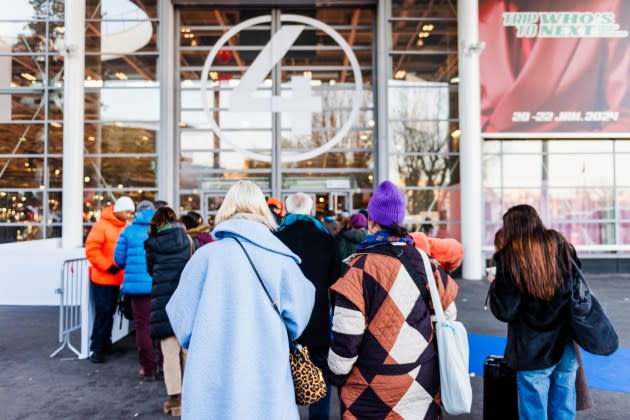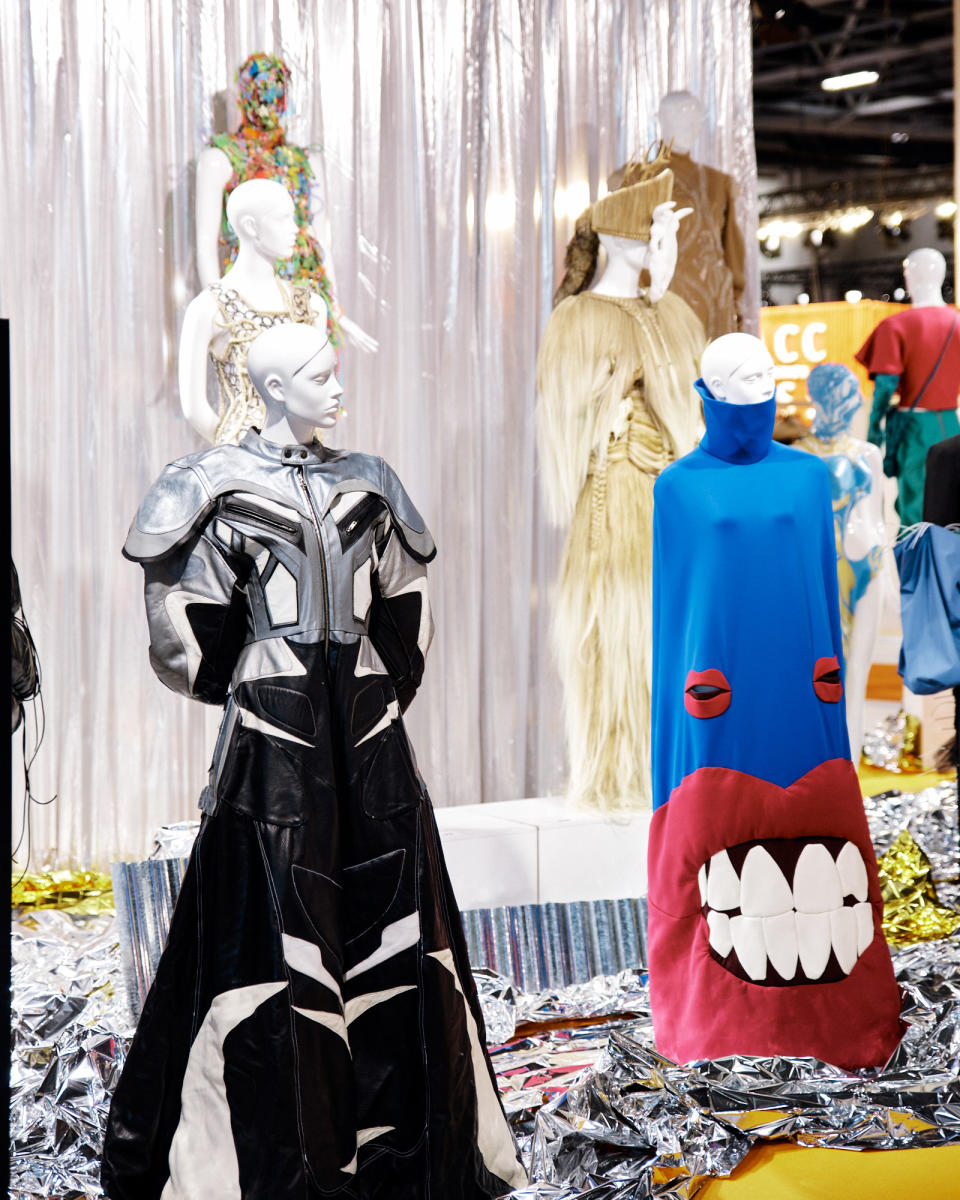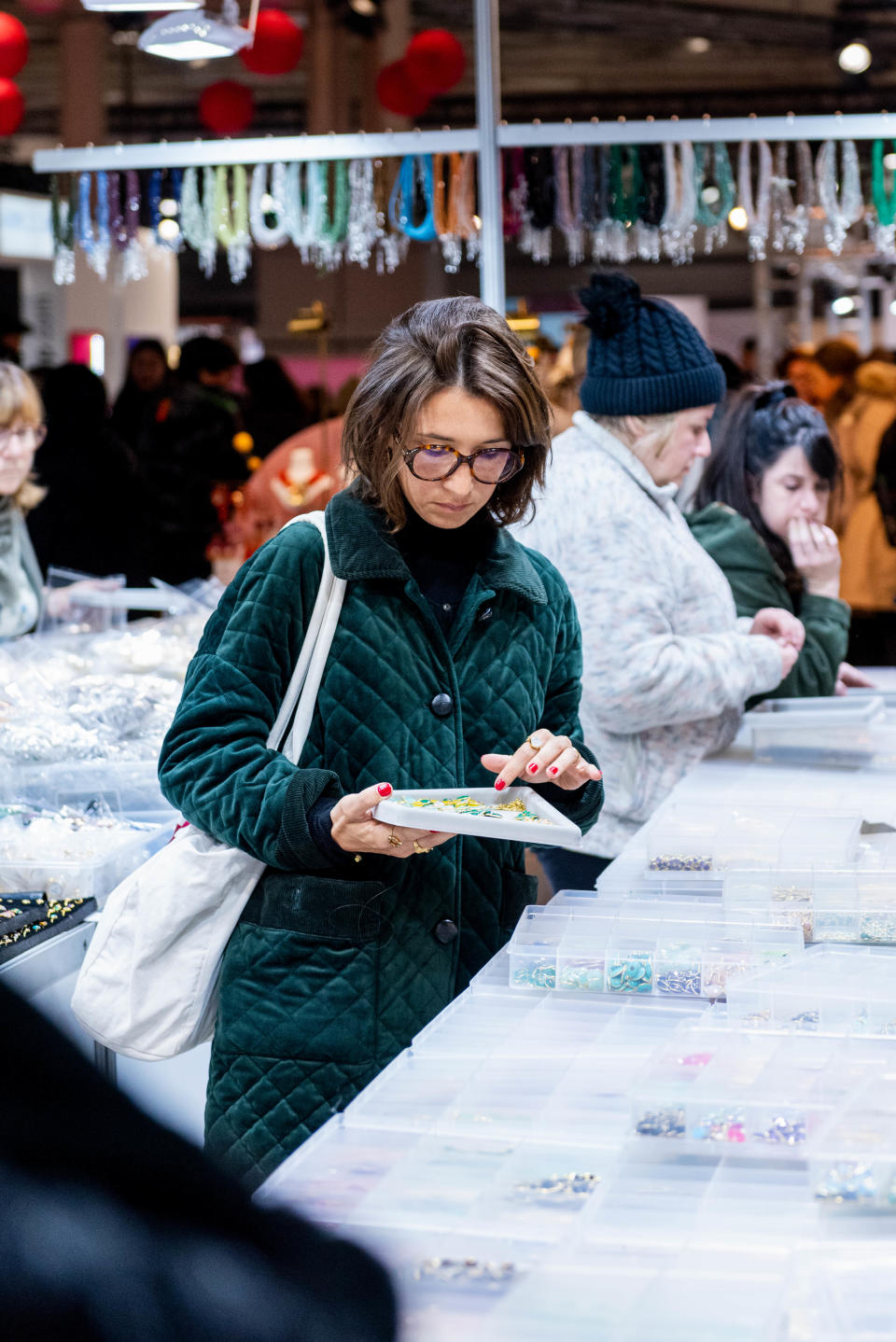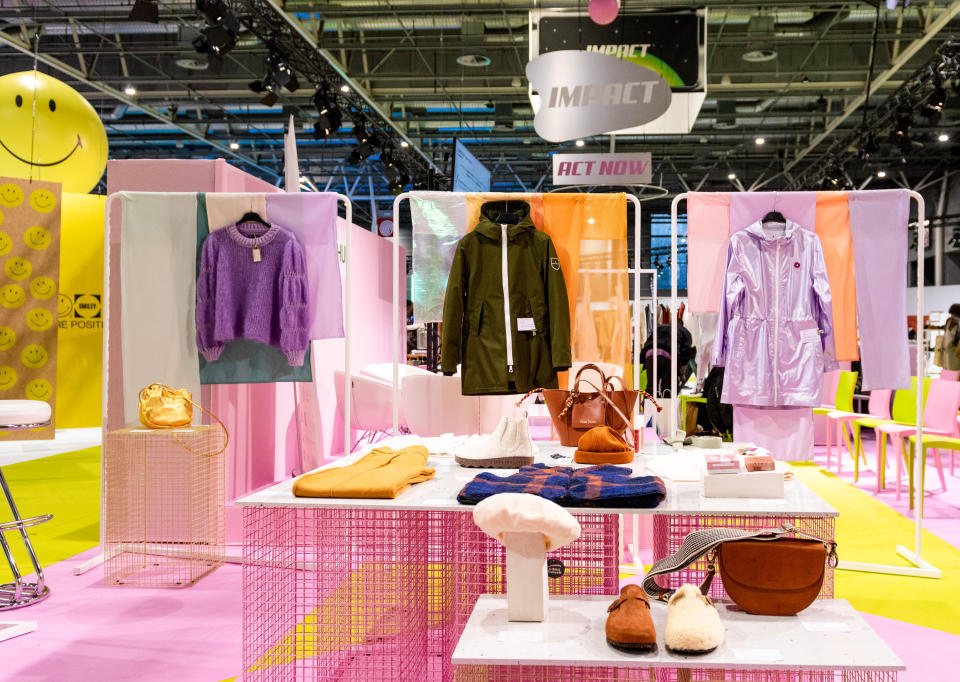Retailers Trim Budgets at Subdued Who’s Next and Bijorhca

PARIS — Identity checks at the entrance set the tone for a fall season defined by caution at WSN’s Who’s Next and Bijorhca fashion trade shows, which ran concurrently with the Salon international de la Lingerie at the Porte de Versailles exhibition halls in Paris.
As a barometer of the mid-market, buyers and exhibitors surveyed by WWD on the third and final day of the fairs repeated the mantra: “We must remain positive.”
More from WWD
Most independent stores disclosed they were keeping budgets flat or aiming to spend less than the last winter season, with many also struggling to find novelty among the collections spread over four halls.
“It’s a shame everyone is playing it safe. It’s at times like this we need newness and standout pieces,” said Marie-Laure Fillaud, who was shopping for her multibrand store Week End in the French coastal resort town La Baule.
“In Paris, the atmosphere is tense with insecurity, insalubrity and the city’s overall degradation,” summed up Patrick Aboukrat, shopping for his multibrand Paris store Abou d’Abi Bazar.
“The clothing offer here has remained the same for several years. We should think about changing the layout to give it more energy,” he suggested.
The retailer is also president of France’s Fédération Nationale de l’Habillement, or National Apparel Federation, a representative body for France’s independent retailers, whose nationwide sales declined 3 percent in 2023.

With Yemen’s Houthi rebels attacking commercial ships in the Red Sea in response to the Israel-Hamas war, brands sourcing outside Europe said they’re facing shipping cost hikes of at least 25 percent. Retailers said the ongoing conflict is impacting customer morale and spending.
“You don’t expect war to impact a little boutique like ours, but it does,” said Emmanuelle Macquaire, shopping for her multibrand Tante Huguette in Belgium’s Lieges region. Macquaire said a small loyal customer base is keeping the store afloat in the current context and named “quality knitwear” at French brand Bella Jones among this edition’s highlights.
“It’s not easy, business is down, as our suppliers tell us,” agreed Sophie Edery, co-owner of Richy’s in the French city of Bordeaux. Edery said the store, which was one of the city’s concept store pioneers, is preparing to open online sales and is focusing on small- to medium-sized, and what they termed “committed,” labels. “It’s more work between constant monitoring, sensible ordering and more storytelling at the sales point,” she noted.
In trend directions, Edery observed “fewer big pieces like coats in favor of small, warm seamed jackets, or neo-retro jackets, or even revisited workwear, which is better adapted to climate change. In terms of color, black is still not back, and colors are still echoing the ‘70s,” she said.
“We’re not seeing a lot of difference with what we saw last season,” said Victoire Amor, director of collections and buying at French retailer NafNaf. “Before I’d get more ideas when I came, now it’s a little bit flat,” she said, pointing at brands carrying similar ranges of folksy, Bolshoi-inspired sleeveless jackets.
Amor named embroideries, geometric prints and shapes, and gray-brown-neutral color combos as key trends still on repeat season-on-season. “Brands are trying to make collections that are a safe value. They want to sell what they know they can sell, so they’ve been less risky. We already all look alike, there’s no brands with strong DNA,” she said.
Amor reported business in the mid-market is tough, with many French labels at risk of closing. “Those built in the ‘80s and ‘90s are suffering right now. Business isn’t what it was in the past. That’s why we try to give a surprise to the customer. We have to recognize all of us, as customers ourselves, none of us are buying as much as we did in the past,” she remarked.

While praising retailer service and welcome at the shows, the predominant feedback was that Who’s Next’s offering — which included around 30 percent new labels and a strong denim offer — overall lacked inspiration.
“My hope was elegance, but it’s sporty, not elegant. And the energy just isn’t here,” said Berit Petersdorf, shopping for Angelo’s, a concept store in Hamburg. Buying on a reduced budget, Petersdorf was banking on the concept store’s regulars, reordering at labels like Not Shy, Majestic and Hartford.
Despite finding little inspiration, Petersdorf said she remained “still optimistic” for the season overall, as she shared videos of some 1.4 million people who demonstrated against the far right in Germany just before she came to the Paris shows. “All of Hamburg, Munich, Berlin were in the streets. 1.4 million is a lot of people,” she said.
While visitor numbers were marginally down year-on-year to 40,000, Frederic Maus, chief executive officer of the fair’s organizer the WSN group, said in a complex outlook for European trade shows, the presence of 1,800 brands, with a return of some key established names, was a positive trend.
“Who’s Next is recovering each season. The salon format is needed. We’re seeing brands who had started other ways of development return to a wholesale model, because they need to open new sales points,” he said.
Among labels that had moved outside their typical showroom format, Musier Paris, created by Parisian influencer Anne-Laure Mais, reported its debut at Who’s Next had been well received, with new corners slated internationally. The collection’s standout seller was a suede trenchcoat, also the most expensive piece, according to the label’s CEO Dorothée Rubinski.
Maus said WSN’s consolidation of the Bijorhca accessories fair with Who’s Next and the Salon International de la Lingerie, now all managed by WSN, gives the combined shows greater appeal. Visitor statistics show international visitors rising to 49 percent, almost equal to in-country visitors. With first-time visitors at 25 percent, the fairs saw more retailers from China, Australia, Japan, South Korea and Canada for this edition.

Putting greater focus on practical solutions to support brands for a challenging season ahead, WSN partnered with the Fédération Française du Prêt à Porter Féminin, the French Federation of Women’s Ready-to-Wear, to host the Love Room offering free advice for brands.
The industry group, which works with some 650 labels, hosted talks on everything it considers key for the season, including the legislative outlook, notably forthcoming regulations over influencer partnerships and environmental regulations.
When embarking on influencer collaborations, brands need to know they will also be held responsible if an influencer breaks the law, explained Thierry Ledunois, entrepreneurship division director for the federation, noting that such partnerships are also now subject to signed contracts.
Meanwhile, under the raft of environmental regulations, he pointed out long-used generic terms — such as “eco-friendly” or “green” — are to become redundant and legally actionable if they’re used.
Among start-ups springing up to help brands comply on the environmental front, Annabelle Truchon, cofounder of Deceo, a consultancy firm helping independents to achieve environmental compliance, browsed Impact, the Who’s Next curation of labels making claims on environmental impact.
Truchon named Nohe as a great example of strong brand narrative. Showing for the first time to open up wholesale channels, the Breton brand ships its small collections of recycled fleece jackets and sturdy organic T-shirts from Portugal by sailing yacht.
“Of course transport only accounts for 10 percent of carbon emissions, but this is great storytelling and still a reduction,” Truchon said. Professional racers pick up Nohe’s collections as part of their race training — a journey that takes three days.
Meanwhile, among newcomers in upcycled sportwear, Custom Rebels caught the eye of David Ride, owner of A.D Boheme, a store in the south of France. “These pieces are unique, you know you’re the only person to have it,” he said, adding that he thought the season’s overall streetwear offer was disappointing, likely due to a clash with Amsterdam’s ModeFabriek fair.
From its Istanbul atelier, Custom Rebels collaborates with local artists to redesign one-off leather pieces and to customize sportswear brands’ unsold, faulty, last-season collections — transforming a classic Puma sweat for example with a rainbow of retro embroidery.
“A brand can be left with 50,000 or up to 100,000 unsold pieces every year,” said Custom Rebels cofounder Alex Cem Uster, adding he is in negotiations with major sports brands manufacturing in Turkey to be able to upcycle such unsold goods.
The label has so far signed with Kappa and Puma for permission to sell redesigned pieces, which retail for around 300 euros for a hoodie.
Among other challenges, just delivering the collections to Who’s Next was a major headache for some 30 exhibitors, following a cybersecurity breach at the logistics platform Fastmag which disrupted January business.
Among those hit was French label Grace & Mila. “It impacted everything from stock flow to operating our tills in the boutiques. We were having to do everything by hand,” said chief creative officer Julie Chou.
The Parisian label is entering the next chapter of its sibling success story with franchises slated internationally plus another French location in the town of Bayonne opening in February.
Showing its biggest collection to-date with 156 pieces, its bestsellers included a mid-length wrap print dress, while its T-shirts carried a message of welcome for the city host of the Summer Olympics: “Paris is love.”
That enthusiasm was not shared by Abou d’Abi Bazar’s Aboukrat. He believes “nothing positive” is to be expected from the forthcoming Paris Olympics, during which he plans to close his boutique in the heart of the Marais.
Accessories were the season’s bright spot among professionals, with an offer comprising 30 percent new brands.
Karin d’Aste, head buyer of leather goods and accessories for Galeries Lafayette, named the strongest trends as “softer bags, greater quality leathers, larger shapes” and comfortable yet practical accessories such as mittens, knitwear and inside-out sheepskin.” She noted “a very British look” of checks, stripes and tartan.
Overall, d’Aste lauded Bijorhca for its curation of “new brands in all price ranges” excluding luxury, and for the salon’s growing offer of cross-category brands which can create stronger universes inside Galeries Lafayette. Other highlights noted by retailers included novelty in fabrics — such as yak — and a strong return of fringe in bags.
For its next 30th anniversary edition, WSN said it will be trialing a weekday format, adapting to the Olympic Games season, and hosting exhibitors in just one single hall.
Best of WWD

